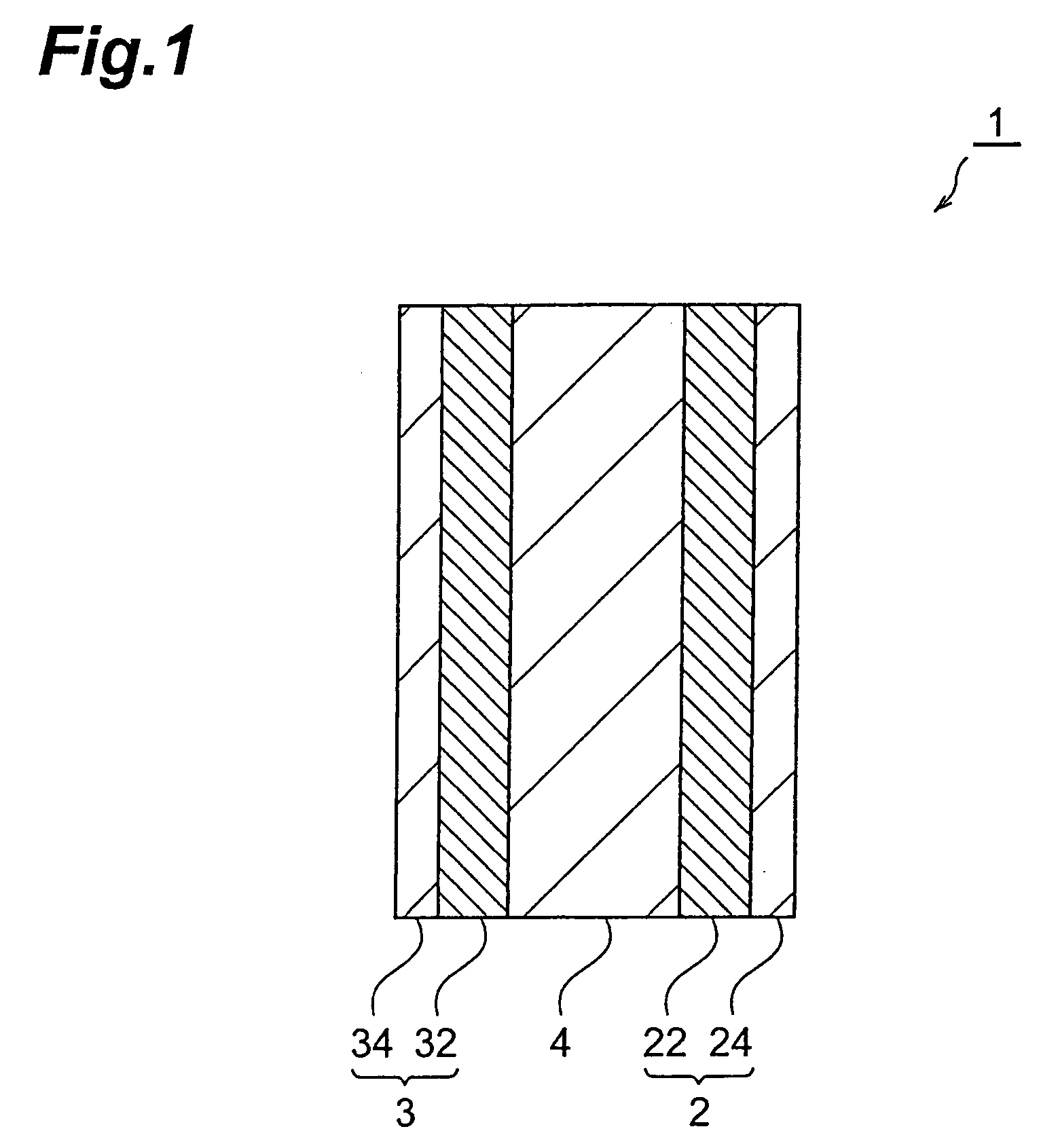Electrode, electrochemical device, method for manufacturing electrode, and method for manufacturing electrochemical device
a manufacturing method and electrochemical technology, applied in the direction of fixed capacitor details, fixed capacitors, cell components, etc., can solve the problems of limited battery energy density increase, inability to guarantee sufficient battery output, and restricted battery active material-containing layers of electrodes provided with conventional electrodes
- Summary
- Abstract
- Description
- Claims
- Application Information
AI Technical Summary
Benefits of technology
Problems solved by technology
Method used
Image
Examples
example 1
(Example 1)
[0229] (1) Fabrication of Composite Particles
[0230] First, composite particles to be used for formation of the active material-containing layer of a lithium ion secondary battery cathode were fabricated by a method including the granulating step described above, according to the following procedure. The composite particles P10 were composed of the electrode active material of the cathode (92 wt %), a conductive additive (4.8 wt %) and a binder (3.2 wt %).
[0231] As the electrode active material of the cathode there were used particles of a complex metal oxide represented by the general formula: LixMnyNizCo1-x-yOw satisfying the conditions: x=1, x=0.33, z=0.33, w=2 (BET specific surface area: 0.55 m2 / g, mean particle size: 12 μm). The conductive additive used was acetylene black. The binder used was polyvinylidene fluoride.
[0232] First, in the stock solution preparation step there was prepared a “stock solution” obtained by dispersing acetylene black in a solution prepar...
example 2
(Example 2)
[0239] (1) Fabrication of Composite Particles
[0240] First, composite particles to be used for formation of the active material-containing layer of a lithium ion secondary battery anode were fabricated by a method including a granulating step, according to the following procedure. The composite particles P10 were composed of the electrode active material of the anode (90 wt %), a conductive additive (5 wt %) and a binder (5 wt %).
[0241] As the electrode active material of the anode there were used artificial graphite particles as a fibrous graphite material (BET specific surface area: 1.0 m2 / g, mean particle size: 19 μm). The conductive additive used was acetylene black. The binder used was polyvinylidene fluoride.
[0242] First, in the stock solution preparation step there was prepared a “stock solution” obtained by dispersing acetylene black in a solution prepared by dissolving polyvinylidene fluoride in N,N-dimethylformamide {(DMF): solvent} (3 wt % acetylene black, 2 ...
example 3
(Example 3)
[0266] First, one electrode (hereinafter referred to as “electrode C1”) having the same construction as the electrode (cathode) of Example 1 was fabricated by the same procedure and under the same conditions as in Example 1. Four electrodes (hereinafter referred to as “electrode C2”, “electrode C3”, “electrode C4” and “electrode C5”) having the same construction as the electrode (cathode) of Example 1, except that the same electrode active material-containing layer and hot melt conductive layer as the electrode of Example 1 were formed on both sides of the current collector, were fabricated by the same procedure and under the same conditions as in Example 1. The electrodes all had rectangular shapes with dimensions of 1.7 cm×3.1 cm.
[0267] Next, five electrodes (hereinafter referred to as “electrode A1”, “electrode A2”, “electrode A3”, “electrode A4” and “electrode A5”) having the same construction as the electrode (anode) of Example 2, except that the same electrode acti...
PUM
| Property | Measurement | Unit |
|---|---|---|
| melting point | aaaaa | aaaaa |
| particle size | aaaaa | aaaaa |
| thicknesses | aaaaa | aaaaa |
Abstract
Description
Claims
Application Information
 Login to View More
Login to View More - R&D
- Intellectual Property
- Life Sciences
- Materials
- Tech Scout
- Unparalleled Data Quality
- Higher Quality Content
- 60% Fewer Hallucinations
Browse by: Latest US Patents, China's latest patents, Technical Efficacy Thesaurus, Application Domain, Technology Topic, Popular Technical Reports.
© 2025 PatSnap. All rights reserved.Legal|Privacy policy|Modern Slavery Act Transparency Statement|Sitemap|About US| Contact US: help@patsnap.com



